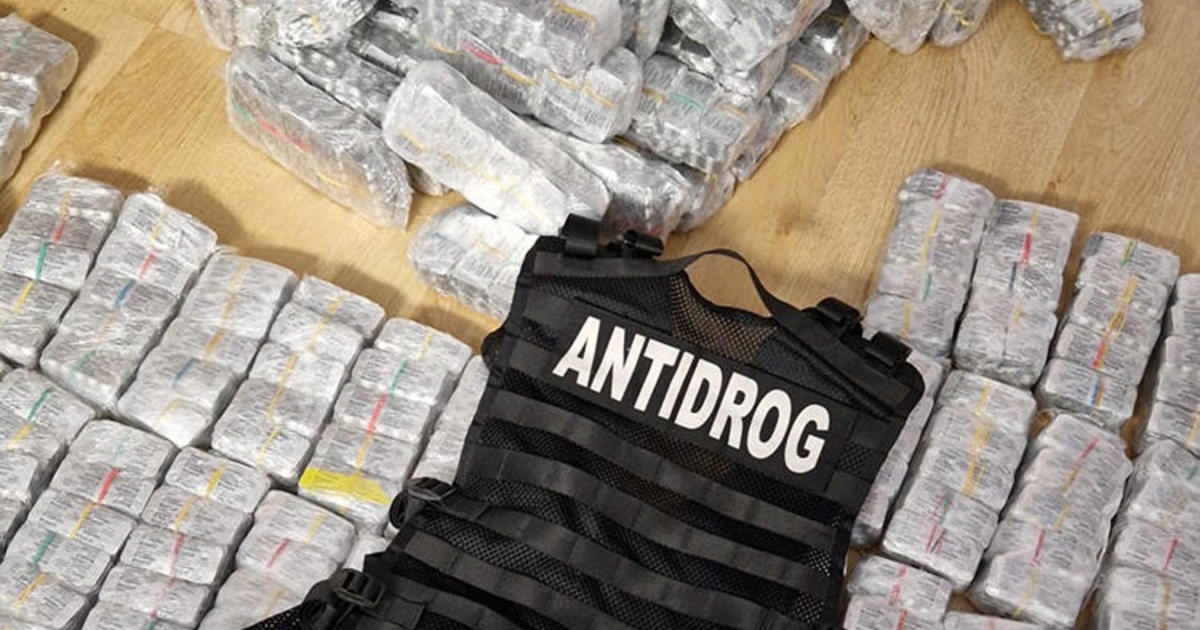Europe-wide police collaboration led to a significant takedown of a criminal network responsible for smuggling millions of prescription pills across international borders. This operation, a testament to the increasing cooperation between European law enforcement agencies, highlights the transnational nature of organized crime and the sophisticated methods employed to bypass border controls. The sheer scale of the operation – involving arrests in multiple countries, the seizure of millions of pills, and the confiscation of assets – underscores the serious threat posed by these criminal enterprises. The investigation serves as a stark reminder of the challenges involved in combating the illegal pharmaceutical trade and the interconnectedness of various criminal activities, including money laundering and violence. The success of this operation offers a glimmer of hope in the ongoing fight against transnational organized crime, emphasizing the critical role of international collaboration and information sharing. It also underscores the evolving tactics used by criminal groups, who increasingly exploit legitimate businesses as fronts and utilize encrypted communication platforms. The substantial street value of the seized pills, estimated at $13.6 million, highlights the significant financial profits driving this illegal activity and the considerable resources at the disposal of such criminal organizations. Further investigation is likely to reveal the extent of the network’s connections and potential links to other criminal activities.
The Scale of the Operation and the International Collaboration
The operation, coordinated by Eurojust and Europol, resulted in the arrest of 47 suspects across Estonia, Finland, Romania, and Serbia. This coordinated effort highlights the growing importance of international collaboration in dismantling transnational criminal networks. The simultaneous raids across 61 addresses in these countries demonstrate the sophisticated planning and execution involved. The seizure of over 6 million prescription pills, with an estimated street value of $13.6 million, emphasizes the considerable financial gains generated by this illicit activity.
Seizures and Assets Confiscated
Beyond the pills, law enforcement seized a range of assets including guns, mobile phones, and luxury cars. This confiscation underscores the network’s significant financial resources and their use of ill-gotten gains to maintain a lavish lifestyle. The seizure of assets plays a critical role in disrupting the financial flows of organized crime, hindering their ability to continue operations and undermining their profitability. This financial blow significantly impacts the criminal network’s capability to fund future criminal activities and demonstrates the effectiveness of asset seizure in combating transnational organized crime. The thoroughness of the operation showcases the comprehensive approach to dismantling not just the immediate players but also the financial infrastructure supporting their illegal activities.
The Modus Operandi of the Pill Smuggling Ring
The criminal network operated across Europe, acquiring pills from other criminal organizations based in Serbia. These pills, primarily used to treat anxiety, seizures, and insomnia, were cleverly concealed in various ways to evade detection. The pills were hidden within tires and car parts transported by lorries, and even cleverly concealed in clothing. The meticulous and varied methods employed reflect a high level of sophistication in their smuggling operations, emphasizing their determination to circumvent border security and law enforcement scrutiny.
Distribution Channels and Target Markets
From Serbia, the pills were initially transported to Romania, acting as a key transit point before being distributed to Estonia, Finland, and Norway. In these countries, gang members served as distributors, selling the pills on the streets. This transnational nature of their operation showcases their adaptability and willingness to operate across international boundaries to access diverse markets. Targeting different countries allowed them to exploit potential weaknesses and variations in national law enforcement systems, enabling them to maximize profits while reducing the risk of detection. The multi-layered distribution network suggests a carefully planned operation, utilizing a chain of individuals to minimise their own individual exposure to risks.
The Broader Context of Transnational Organized Crime
This pill smuggling operation aligns with a broader trend identified in a recent Europol report. The report emphasizes the increasing focus of Europe’s most dangerous gangs on drug smuggling, particularly cocaine, cannabis, heroin, and synthetic drugs. This pill-smuggling case demonstrates the versatility and adaptability of organized crime networks, highlighting their willingness to diversify their activities and capitalize on various illicit markets based on demand and opportunities.
Utilizing Legitimate Businesses as Fronts
Europol previously identified the strategic use of legitimate businesses by criminal groups as a means of disguising and concealing their criminal activities. This sophisticated tactic allows them to operate undetected and evade suspicion. By establishing seemingly normal business operations as fronts, they can maintain a legitimate cover for their illegal transactions, reducing the risk of detection. This complex method emphasizes the advanced capabilities of these criminal networks and their ability to adapt to ongoing enforcement measures.
Takeaway Points
- The successful takedown of a large-scale prescription pill smuggling ring highlights the effectiveness of international police collaboration.
- The operation underscores the sophistication of transnational organized crime, demonstrating advanced smuggling techniques and intricate distribution networks.
- The seizure of significant assets, including millions of pills and luxury items, demonstrates the considerable financial gains generated by this illicit activity.
- This case highlights the need for continued international cooperation and information sharing to combat the evolving tactics of organized crime.
- The operation reinforces the important role of asset seizure in disrupting the financial infrastructure supporting criminal enterprises.




